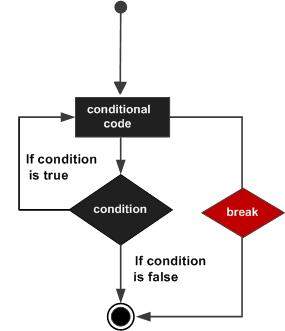
- Go - Home
- Go - Overview
- Go - Environment Setup
- Go - Program Structure
- Go - Basic Syntax
- Go - Data Types
- Go - Variables
- Go - Constants
- Go - Identifiers
- Go - Keywords
- Go - Operators
- Go - Arithmetic Operators
- Go - Assignment Operators
- Go - Relational Operators
- Go - Logical Operators
- Go - Bitwise Operators
- Go - Miscellaneous Operators
- Go - Operators Precedence
- Go Decision Making
- Go - Decision Making
- Go - If Statement
- Go - If Else Statement
- Go - Nested If Statements
- Go - Switch Statement
- Go - Select Statement
- Go Control Flow Statements
- Go - For Loop
- Go - Nested for Loops
- Go - Break Statement
- Go - Continue Statement
- Go - Goto Statement
- Go Functions
- Go - Functions
- Go - Call by Value
- Go - Call by Reference
- Go - Functions as Values
- Go - Function Closure
- Go - Function Method
- Go - Anonymous function
- Go Strings
- Go - Strings
- Go - String Length
- Go - String Concatenation
- Go - Compare Strings
- Go - Split String
- Go - Substring Extraction
- Go - String Replacement
- Go - String Interpolation
- Go - Parse Date Strings
- Go Arrays
- Go - Arrays
- Go - Multidimensional Arrays
- Go - Multidimensional Arrays
- Go - Passing Arrays to Functions
- Go - Pointers
- Go - Pointers
- Go - Array of pointers
- Go - Pointer to pointer
- Go - Passing pointers to functions
- Go Advanced Control Structures
- Go - Scope Rules
- Go - Dereferencing Pointer
- Go - Structures
- Go - Slice
- Go - Slice of Slices
- Go - Range
- Go - Maps
- Go - Recursion
- Go - Type Casting
- Go - Interfaces
- Go - Type Assertion
- Go - Error Handling
- Go - Concurrency
- Go - Regular Expression
- Go - Inheritance
- Go - Packages
- Go - Templates
- Go - Reflection
- Go - Generics
- Go File Handling
- Go - Read File By Word
- Go - Read File By Line
- Go - Read CSV Files
- Go - Delete File
- Go - Rename & Move File
- Go - Truncate a File
- Go - File Read-Write Mode W/O Truncation
- Go Miscellaneous
- Go - defer Keyword
- Go - Fmt Package
- Go - Zero Value
- Go - Import
Go - break statement
The break statement in Go programming language has the following two usages −
When a break statement is encountered inside a loop, the loop is immediately terminated and the program control resumes at the next statement following the loop.
It can be used to terminate a case in a switch statement.
If you are using nested loops, the break statement will stop the execution of the innermost loop and start executing the next line of code after the block.
Syntax
The syntax for a break statement in Go is as follows −
break;
Flow Diagram

Example
package main
import "fmt"
func main() {
/* local variable definition */
var a int = 10
/* for loop execution */
for a < 20 {
fmt.Printf("value of a: %d\n", a);
a++;
if a > 15 {
/* terminate the loop using break statement */
break;
}
}
}
When the above code is compiled and executed, it produces the following result −
value of a: 10 value of a: 11 value of a: 12 value of a: 13 value of a: 14 value of a: 15
Advertisements